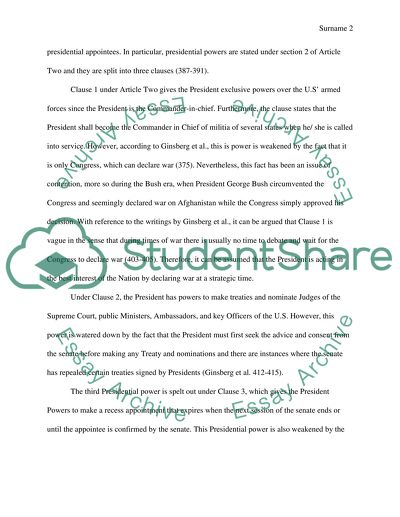Cite this document
(“Presidential Powers Essay Example | Topics and Well Written Essays - 1250 words”, n.d.)
Retrieved from https://studentshare.org/history/1483188-poli-sci-analytical-essay
Retrieved from https://studentshare.org/history/1483188-poli-sci-analytical-essay
(Presidential Powers Essay Example | Topics and Well Written Essays - 1250 Words)
https://studentshare.org/history/1483188-poli-sci-analytical-essay.
https://studentshare.org/history/1483188-poli-sci-analytical-essay.
“Presidential Powers Essay Example | Topics and Well Written Essays - 1250 Words”, n.d. https://studentshare.org/history/1483188-poli-sci-analytical-essay.


